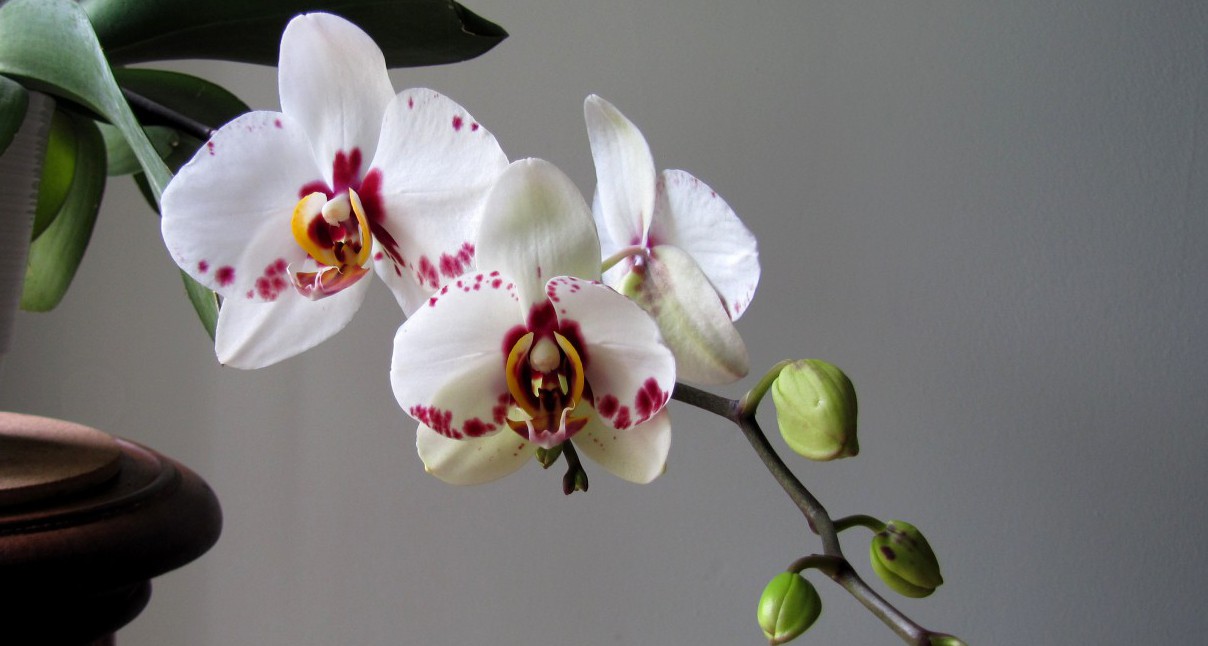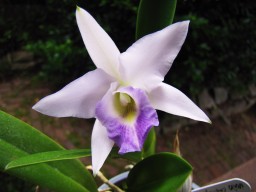This Brassavola nodosa has just come into bloom:

It only produced two flowers on one spike this year–Still, considering that it didn’t bloom at all last year, I’ll take them–

The leaves of this plant are described as terete, meaning cylindrical and tapering–This orchid species is not a fast grower for me, putting on an average of two to three leaves a year, unlike some hybrids of B. nodosa that produce many new leads and pseudobulbs each year, like Brassocatleya Ladybird–

The flowers of B. nodosa are only fragrant at night, and what a fragrance it is–Like the moonflower and many other night-scented flowers, the scent of this orchid is a rich , slightly powdery floral with a citrus edge–In fact, these spidery white blooms reminded me of the moonflowers I grew last year when I first inhaled their scent a few nights ago–I prize fragrance above all in flowers, and this orchid does not disappoint–Speaking of moonflowers, I have several growing from seed I collected last year, not yet old enough to bloom–Later in the summer I’ll post pics when they do–

I have a fondness for orchids that are green, or green and white–They seem more mysterious and exotic–I also love how particularly satisfying it is to stand on a darkened porch and inhale this delicious fragrance, unencumbered by visual or audio stimuli, just falling into the scent–
Brassavola nodosa is found from Mexico and Central America to parts of South America–Where mine sits he gets a few hours of direct early morning sun and several hours of late evening sun, with bright shade during the hottest parts of the day–I water when dry, making sure to let the medium dry out again before the next watering, as with cattleyas; this guy is in a small pot, so it averages about 3 times a week in summer–This is a rewarding orchid to grow, and I have several other Brassavola species on my list of desired plants–

